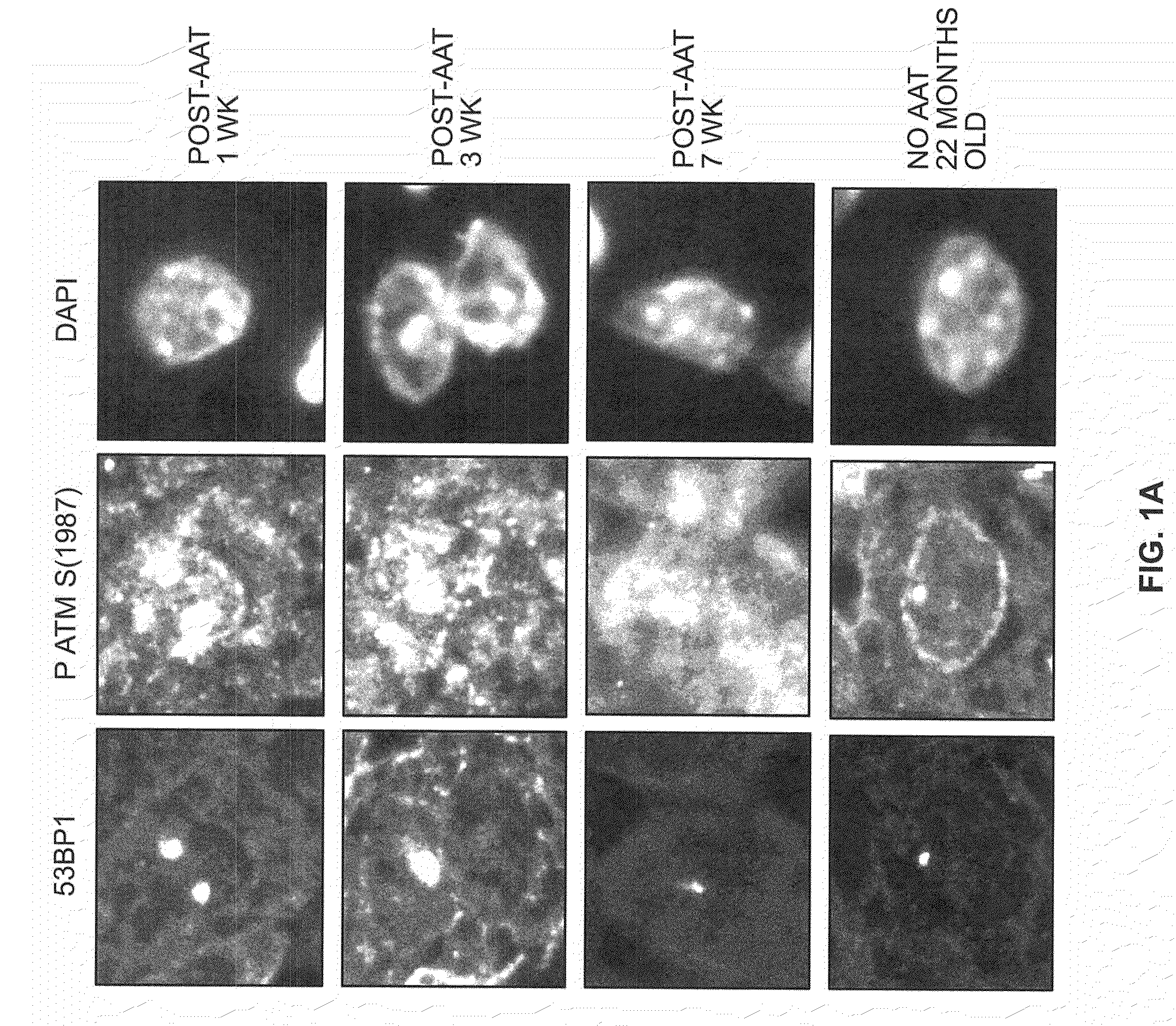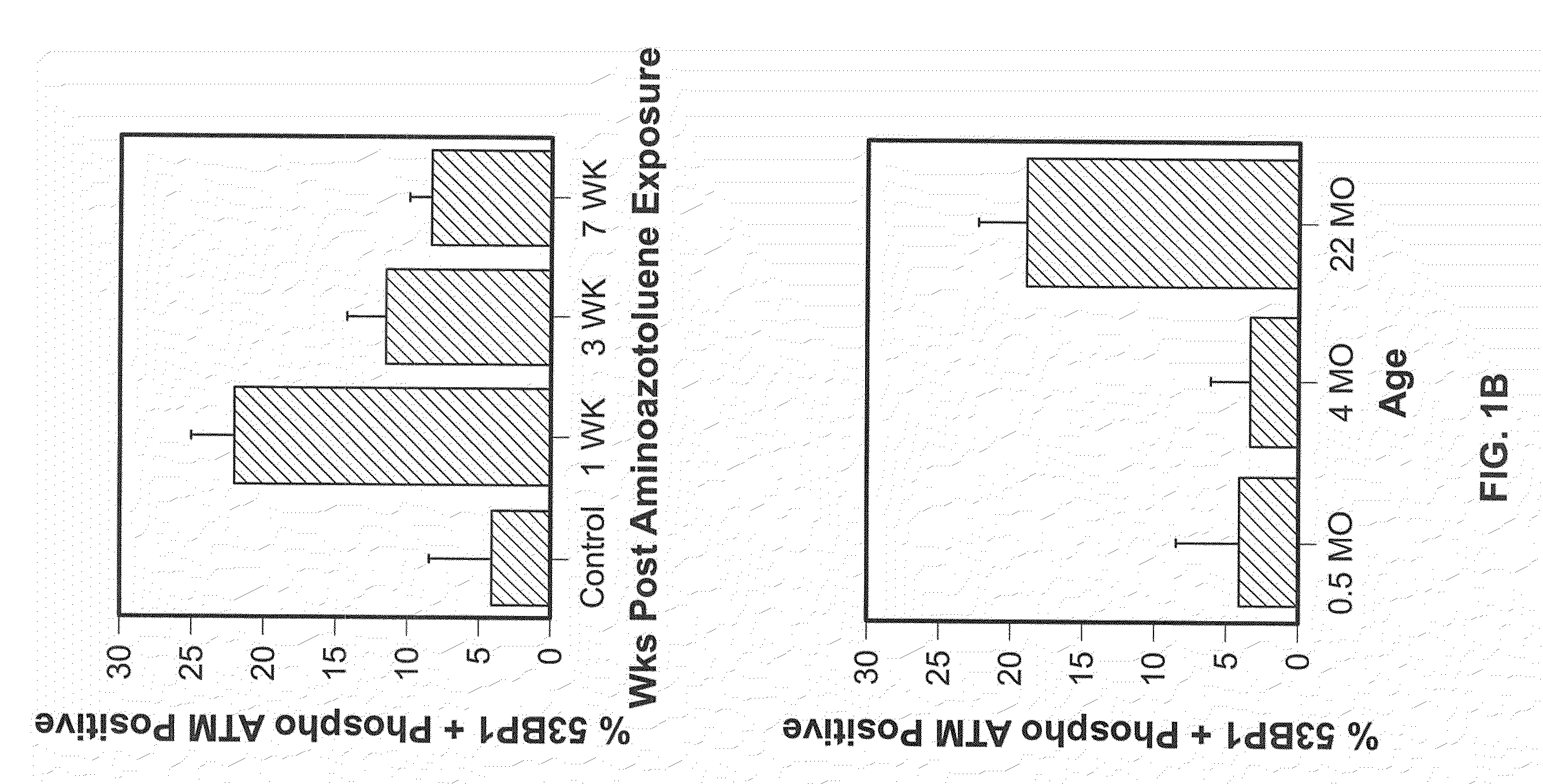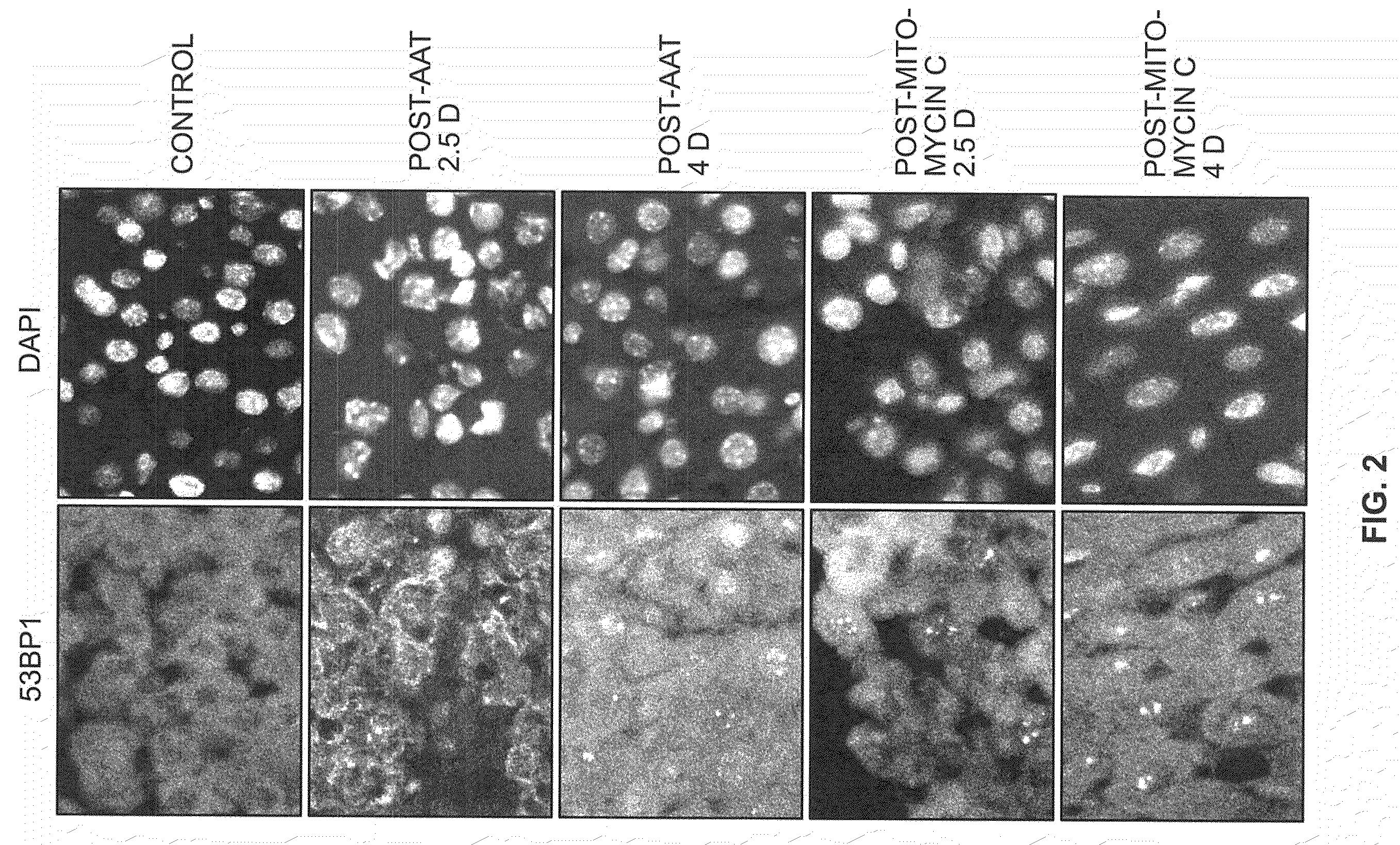Methods for determining aged based accumulation of senescent cells using senescence specific DNA damage markers
a dna damage marker and senescence technology, applied in the field of cell senescence, can solve the problems of reducing the fitness seen with aging, cell mistaking for senescence cells, and current methods for monitoring senescence in individual cells have limitations
- Summary
- Abstract
- Description
- Claims
- Application Information
AI Technical Summary
Benefits of technology
Problems solved by technology
Method used
Image
Examples
example 1
[0047]Eight to eleven-day-old F1 mice from C57BL / 6, obtained from the National Institute of Aging, Aged Rodent Colonies (Bethesda, Md.), were injected intraperitoneally with AAT (Sigma-Aldrich; St. Louis, Mo.) at 2 mg / kg body weight in corn oil. Mitomycin C (Sigma-Aldrich) was injected under a similar protocol at 2.5 mg / kg body weight in PBS. Control gender-matched litter mates were injected with corn oil or PBS. The pharmacokinetics for clearance of AAT are not known with certainty, while mitomycin C and its active metabolites are cleared with a half life of under 1 h (Dorr, 1988). Female C57BL / 6 mice (4- and 22-month-old) were allowed to acclimate at least 1 week prior to usage. All procedures were done within the guidelines of the Animal Research Committee at the
[0048]University of Illinois at Chicago and the “Principles of laboratory animal care” (NIH publication No. 86-23, revised 1985).
[0049]To detect DNA damage foci, frozen 5-micron liver sections were rapidly transferred to ...
example 2
[0056]In this experiment activated 53BP1 and ATM, a subset of the ATM proteins that occur in foci, are shown to be present in both senescent and DDR cells.
[0057]To identify hepatocytes in vivo with long-term changes after a transient exposure to DNA damaging agents, young mice were given a single exposure to the DNA damaging agent, AAT, an azo compound that is activated in liver hepatocytes to become an alkylating agent that can induce cellular senescence in vitro (Zimmerman, 1999). Frozen liver tissue sections contained nuclear DNA damage foci at the earliest time point, 2.5 days post-exposure (FIG. 2). As shown, simultaneous detection of 53BP1 and phospho ATM after AAT exposure revealed elevated levels of nuclear foci containing both these proteins at 1 and 3 weeks after genotoxin exposure (FIGS. 1A and B). By 7 weeks after AAT exposure cells with 53BP1 / phospho ATM foci were still present at higher levels than in the unexposed control mice (FIG. 1B). However, in time, we note 2 sp...
example 3
[0059]DNA damage repair proteins such as Chk2 that are active in DDR are not active during senesce. An assay for protein activation by ATM / ATR kinases and downstream kinases, including p53 (S15), Chk2 (T68), and a generic ATM / ATR phosphorylated target sequence (ATM / ATR (p) S / TQ) was run. We saw activation of all of these with DNA damage in the AAT exposed mice (FIG. 3, FIG. 4, FIG. 5 and FIG. 6); however, except for ATM / ATR (p) S / TQ, all were activated only transiently, showing baseline or near baseline levels by 3-7 weeks post-AAT exposure. Mitomycin C exposure caused similar changes (Table 1). Focus proteins with the ATM / ATR (p) S / TQ sequence were, after exposure to either genotoxin, activated even 7 weeks after senescence induction but there was a reduction in signal intensity (Table 1). This antibody would detect a subset of the large group of activated ATM / ATR targets (Matsuoka et al., 2007), including NBS1 and Chk2, but it has minimal affinity for activated ATM itself (S. Mann...
PUM
| Property | Measurement | Unit |
|---|---|---|
| half life | aaaaa | aaaaa |
| time | aaaaa | aaaaa |
| time | aaaaa | aaaaa |
Abstract
Description
Claims
Application Information
 Login to View More
Login to View More - R&D
- Intellectual Property
- Life Sciences
- Materials
- Tech Scout
- Unparalleled Data Quality
- Higher Quality Content
- 60% Fewer Hallucinations
Browse by: Latest US Patents, China's latest patents, Technical Efficacy Thesaurus, Application Domain, Technology Topic, Popular Technical Reports.
© 2025 PatSnap. All rights reserved.Legal|Privacy policy|Modern Slavery Act Transparency Statement|Sitemap|About US| Contact US: help@patsnap.com



